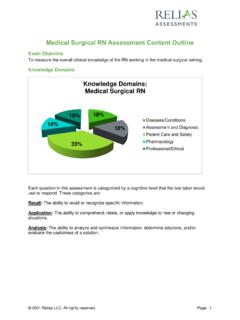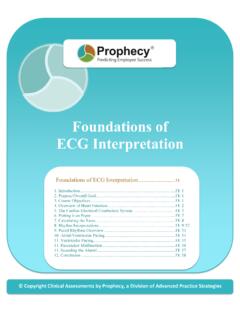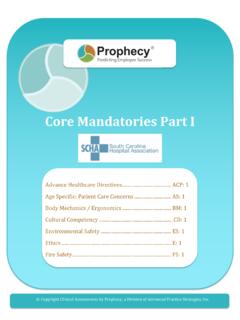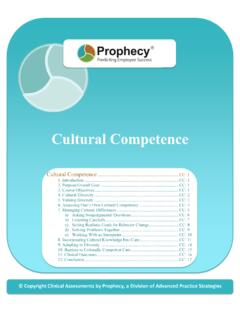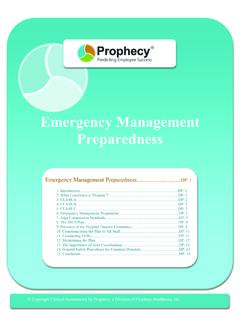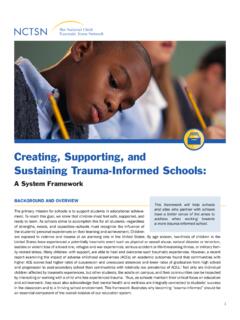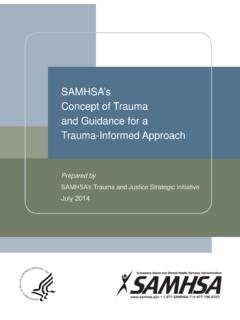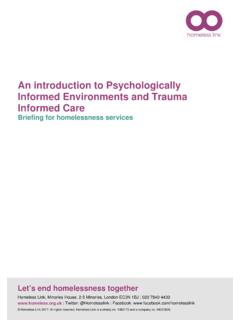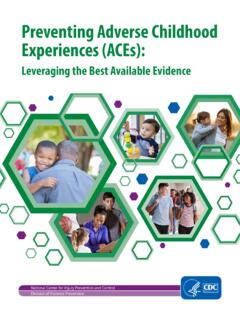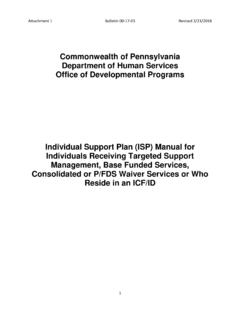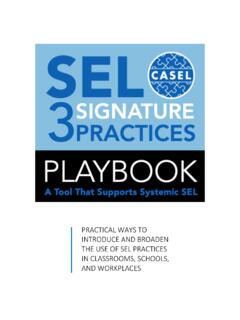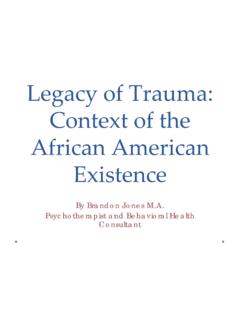Transcription of Emergency Department RN Assessment Content Outline
1 2021 Relias LLC. All rights reserved. Page | 1 Emergency Department RN Assessment Content Outline Exam Objective To measure the overall clinical knowledge of the RN working in the Emergency Department setting. Knowledge Domains Each question in this Assessment is categorized by a cognitive level that the test taker would use to respond. These categories are: Recall: The ability to recall or recognize specific information. Application: The ability to comprehend, relate, or apply knowledge to new or changing situations. Analysis: The ability to analyze and synthesize information, determine solutions, and/or evaluate the usefulness of a solution. 23%23%14%14%13%12%Knowledge Domains:ED RNManage Diseases andConditionsPatient AssessmentPatient CarePharmacologyProfessional Issuesand EthicsSafety and InfectionControlED RN Assessment Content Outline 2021 Relias LLC.
2 All rights reserved. Page | 2 Content Outline I. Patient Assessment a. Knowledge of performing head to toe and focused health assessments and recognition of age related physical and psycho-social Assessment findings. b. Knowledge of signs and symptoms of medical and non-medical emergencies seen in the ED. c. Knowledge of indications for monitoring patient conditions using ECG, capnography, SpO2, AED, arterial lines, central venous pressure monitoring. etc. d. Knowledge of common pain Assessment scales, including indications for use, in the critical care setting such as Glasgow Coma Scale (GCS), Richmond Agitation-Sedation Scale (RASS), and Alert, Verbal, Painful, Unresponsive (AVPU). e. Knowledge of auscultating fetal heart sounds in pregnancy < 20 weeks gestation.
3 II. Manage Diseases and Conditions a. Knowledge of patient emergencies related to cardiovascular, neurological, respiratory, genitourinary, gynecologic, psychiatric, hematologic, and musculoskeletal conditions including but not limited to aspiration, acute respiratory distress, acute coronary syndrome, shock (cardiogenic/obstructive), transient ischemic attack (TIA), stroke, appendicitis, cholecystitis, urinary tract infections, epididymitis, vaginal bleeding, sexual assault, eclampsia, suicidal ideation, abuse and neglect, sickle cell crisis, fractures, and trauma . b. Knowledge of ocular and maxiofacial emergencies including but not limited to burns, abrasions, foreign bodies, glaucoma, conjunctivitis & iritis, retinal artery occlusion, retinal detachment, trauma , epistaxis, bell s palsy and trigeminal neuralgia, mastoiditis, Temporo-mandibular joint (TMJ) dislocation, rupture tympanic membrane, acute vestibular dysfunction.
4 C. Knowledge of integumentary conditions and wounds including but not limited to risk for skin breakdown, cellulitis, and pressure injuries, abrasions, avulsions, lacerations, puncture wounds, d. Knowledge of hematological and immunological condition including but not limited to neutropenia, heparin induced thrombocytopenia, and anemia. e. Knowledge of protocols and safety procedures for a patient preparing for surgeries or procedures such as diagnostic tests (x-rays, blood tests), expected pre-procedure medication and fluid orders, confirmation of consent, confirmation of blood type, and safety checks. f. Knowledge of lab findings and electrolyte replacement protocols commonly used for the management of conditions among patients in the Emergency setting such as hyperkalemia, hypokalemia, hyponatremia, hypernatremia.
5 G. Knowledge of environmental and toxicological emergencies including but not limited to burns, chemical exposures, electrical injuries, envenomation, radiation exposure, temperature related emergencies, vector born illness, drug overdose, substance abuse, drug withdrawal. h. Knowledge of communicable diseases including but not limited to TB, MRSA, VRE. ED RN Assessment Content Outline 2021 Relias LLC. All rights reserved. Page | 3 i. Knowledge of end-of-life care including what treatments are considered life- sustaining , how to provide comfort, patient response to discontinuation of life sustaining support, and family needs at the end-of-life, attending ED and their families such as end-of-life issues, organ and tissue donation, advanced directives, withdrawing/withholding treatment and palliative care.
6 III. Patient Care a. Knowledge of nursing care based on the Emergency nursing process and standards related to the principles of airway, breathing, and circulation such as evaluating patients at risk for airway complication before those with breathing and circulation concerns, use of oropharyngeal and nasopharangel airways, suctioning, maintaining endotracheal tube (ETT) in place, Bilevel Positive Airway Pressure (BiPAP), and end-tidal carbon dioxide (ETC02) monitoring. b. Knowledge of nursing care related to respiratory conditions such as patients with status asthmatics, anaphylaxis, tracheostomy, thoracotomy, chest tube placement, pneumonia c. Knowledge of Basic Life Support (BLS) and Advance Cardiovascular Life Support (ACLS), and pediatric advance life support (PALS) protocol including the interventions for life threatening rhythms including but not limited to use of defibrillation, cardioversion and trans-cutaneous pacing.
7 D. Knowledge of nursing care of patients with cardiac conditions such as dysrhythmias, lethal arrhythmias, pericardiocentesis, and acute coronary syndrome. e. Knowledge of providing nursing care to the patients with various types of access devices via intraosseous (IO), intravenous (IV), peripherally inserted central catheter (PICC), and central lines as well as fluid administration through such devices including rapid fluid infusion such as with massive hemorrhage and use of blood/ fluid warmer. f. Knowledge of pain Assessment using numeric pain rating scale, visual analog scale (VAS). g. Knowledge of assessing patients level of consciousness using various screening tools including but not limited to Glasgow Coma Scale (GCS), Alert, Verbal Stimuli, Painful stimuli, Unresponsive (AVPU), Richmond Agitation Sedation Scale (RASS).
8 National Institute of Health Stroke Scale (NIHSS) and monitoring for hyperglycemia and hypoglycemia. h. Knowledge of nursing care, monitoring, and interventions related to neurologic conditions such as seizures or stroke including but not limited to intracranial pressure (ICP), administration of mannitol, hypertonic saline, stroke protocols. i. Knowledge of providing nursing care to the patients with musculoskeletal injuries such as fracture/dislocations including but not limited to Assessment of neurovascular status to prevent complications such as compartment syndrome and use of slings, splints (knee immobilizer, boots). j. Knowledge of providing nursing care to the patients to maintain normothermia and treat hypothermia by administering IV fluids through fluid warmer, active and passive rewarming.
9 K. Knowledge of providing nursing care for the patients with wounds including but not limited to applying pressure, use wound care supplies to achieve hemostasis, caring for ED RN Assessment Content Outline 2021 Relias LLC. All rights reserved. Page | 4 wound evisceration, dehiscence, and signs of wound infection. l. Knowledge of providing nursing care to patients with gastrointestinal devices or interventions such as gastric lavage, enema, insertion and use of nasogastric or orogastric tubes, insertion of suppositories, suctioning, Assessment of gastric tubes. m. Knowledge of providing nursing care to the patients requiring pelvic examination. n. Knowledge of laboratory specimen collection and interpretation including chemistry, complete blood count, cultures, arterial blood gases and how results impact patient care such as but not limited to interventions for acid-base imbalances, electrolyte replacement, and transfusion orders for low hematocrit or hemoglobin.
10 O. Knowledge of providing nursing care to the patients with urethral and supra-pubic catheter. p. Knowledge of providing nursing care to the patients requiring eye irrigation and body surface decontamination. IV. Professional Issues and Ethics a. Knowledge of best practices for communication with team members and patients including but not limited to shift hand-off, communication during rounds and emergencies, and conflict resolution strategies. b. Knowledge of the roles of multidisciplinary members and staff including nursing assistance, health care administrator, respiratory therapist, transport, pharmacy, Emergency care physicians, advance practice nurses and others. c. Knowledge of patient rights, ethical principles, and legal protections such as Health Insurance Portability and Accountability Act (HIPPA), advance directives, power of attorney, living will, Do Not Resuscitate (DNR); principles of autonomy, beneficence, non-maleficence, informed consent, confidentiality, justice, and veracity.

